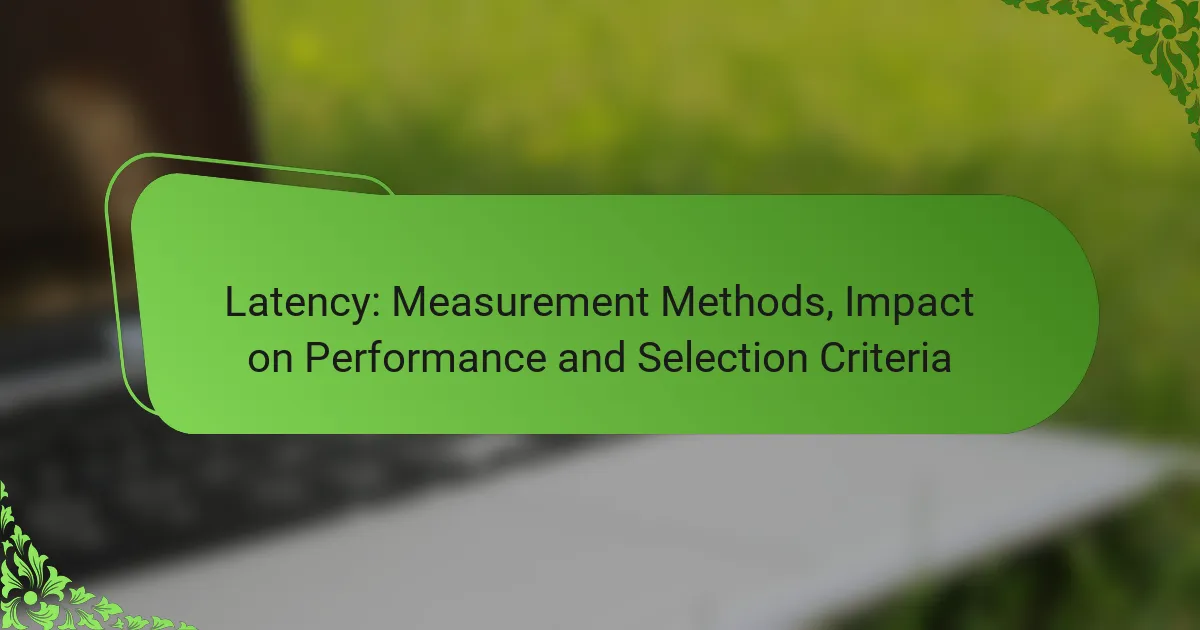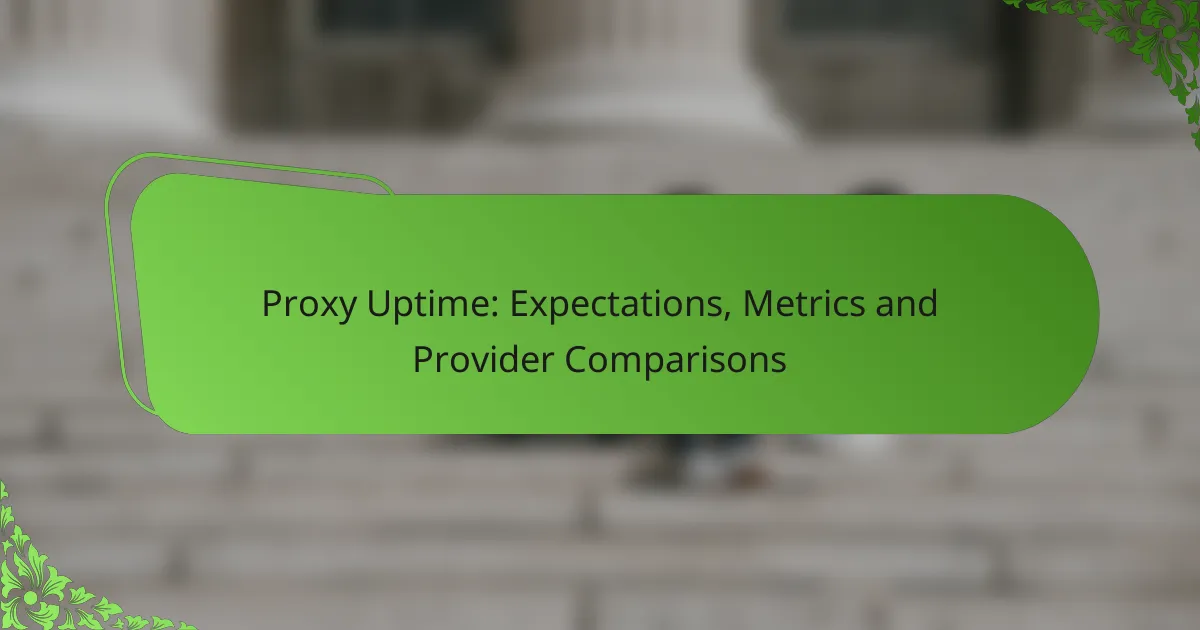Evaluating proxy performance is crucial for ensuring optimal speed and reliability in data handling. Utilizing benchmarking tools like Bright Data, Oxylabs, and Smartproxy allows users to assess key metrics such as latency and throughput, which are essential for informed decision-making. Techniques such as load testing and real-time monitoring further enhance this evaluation, providing valuable insights into both performance and user experience.

What are the best proxy performance benchmarking tools?
The best proxy performance benchmarking tools help users evaluate the speed, reliability, and overall effectiveness of proxy services. Key tools include Bright Data, Oxylabs, Smartproxy, GeoSurf, and NetNut, each offering unique features and capabilities for performance assessment.
Bright Data
Bright Data, formerly known as Luminati, is a leading proxy service that offers comprehensive benchmarking tools. Users can monitor performance metrics such as latency, uptime, and response times across various locations, making it easier to assess the quality of proxies.
When using Bright Data, consider leveraging their extensive global network to test proxies in multiple regions. This can provide insights into how geographical factors affect performance, which is crucial for businesses targeting specific markets.
Oxylabs
Oxylabs provides a robust set of benchmarking tools that focus on speed and reliability. Their platform allows users to conduct real-time tests, comparing different proxies to identify the best options for specific tasks.
Utilizing Oxylabs, users should pay attention to the detailed analytics provided, which can help in understanding bandwidth usage and connection stability. This information is vital for optimizing web scraping or data collection tasks.
Smartproxy
Smartproxy offers user-friendly benchmarking tools that cater to both beginners and advanced users. Their dashboard provides insights into proxy performance, including response times and error rates, which are essential for evaluating service quality.
For effective benchmarking with Smartproxy, it’s advisable to run tests during peak and off-peak hours. This approach can reveal how traffic loads impact proxy performance, helping users make informed decisions.
GeoSurf
GeoSurf specializes in location-based proxy services and includes benchmarking tools that focus on geographic performance. Users can test proxies from various countries to see how location affects speed and accessibility.
When using GeoSurf, take advantage of their location-specific testing features. This can be particularly useful for businesses that need to access region-restricted content or analyze local market trends.
NetNut
NetNut provides a unique approach to proxy benchmarking by utilizing a direct ISP connection, which often results in faster and more reliable performance. Their tools allow users to measure latency and throughput effectively.
To maximize the benefits of NetNut, users should focus on testing proxies under different network conditions. This can help identify the most reliable proxies for high-demand applications, ensuring optimal performance during critical tasks.

How to evaluate proxy performance effectively?
To evaluate proxy performance effectively, focus on key metrics such as latency, throughput, and error rates. These metrics provide insights into how well a proxy server handles requests and delivers data, allowing for informed decisions on optimization and selection.
Latency measurement
Latency measurement assesses the time it takes for a request to travel from the client to the proxy server and back. This metric is crucial because lower latency often translates to a better user experience. Aim for latency in the low tens of milliseconds for optimal performance.
To measure latency, use tools like ping or traceroute, which can help identify delays in the network path. Regularly monitoring latency can reveal trends and potential issues, allowing for timely adjustments.
Throughput analysis
Throughput analysis evaluates the amount of data a proxy can handle over a specified period, typically measured in megabits per second (Mbps). High throughput is essential for applications requiring large data transfers, such as video streaming or file downloads.
To assess throughput, conduct tests during peak and off-peak hours to understand performance variations. A good proxy should maintain throughput levels that meet or exceed the needs of your applications, ideally in the range of several hundred Mbps for high-demand scenarios.
Error rate tracking
Error rate tracking monitors the frequency of failed requests or responses from the proxy server. A low error rate is critical for maintaining service reliability and user satisfaction. Aim for an error rate below 1% for most applications.
Implement logging and monitoring tools to track errors in real-time. Analyzing error patterns can help identify underlying issues, such as server overloads or misconfigurations, enabling proactive resolutions to maintain optimal performance.

What techniques enhance proxy performance benchmarking?
Techniques that enhance proxy performance benchmarking include load testing, real-time monitoring, and data logging. These methods help identify bottlenecks, ensure optimal performance, and provide insights into user experience.
Load testing
Load testing evaluates how a proxy performs under various levels of demand. By simulating multiple users or requests, you can assess the proxy’s capacity and identify its breaking points. Tools like Apache JMeter or Gatling can be used to generate traffic and measure response times.
When conducting load tests, consider using a range of user scenarios to mimic real-world conditions. Aim for peak loads that reflect typical usage patterns, which can vary significantly based on the application and user base. This helps ensure that the proxy can handle expected traffic without degradation in performance.
Real-time monitoring
Real-time monitoring involves continuously tracking the performance metrics of a proxy server. This technique allows for immediate detection of issues such as latency spikes or connection failures. Tools like Grafana or Prometheus can visualize data in real time, enabling quick responses to performance anomalies.
Implement alerts for critical metrics, such as response time exceeding a certain threshold or error rates rising above a predefined level. This proactive approach helps maintain optimal performance and enhances user satisfaction by addressing issues before they escalate.
Data logging
Data logging captures detailed information about proxy performance over time. This includes metrics like request counts, response times, and error rates, which can be invaluable for identifying trends and recurring issues. Tools such as ELK Stack (Elasticsearch, Logstash, Kibana) can help aggregate and analyze log data effectively.
Ensure that your logging strategy balances detail with performance overhead. While comprehensive logs provide insights, excessive logging can slow down the proxy. Regularly review and optimize log settings to focus on the most relevant data for your benchmarking efforts.

What user insights can improve proxy performance?
User insights play a crucial role in enhancing proxy performance by identifying specific areas for improvement. By analyzing feedback, studying real-world applications, and conducting performance reviews, users can pinpoint issues and optimize their proxy solutions effectively.
User feedback analysis
User feedback analysis involves collecting and interpreting comments from users regarding their experiences with proxy services. This can highlight common issues such as latency, connection failures, or security concerns. Regularly surveying users can help prioritize enhancements based on their needs.
Consider implementing a structured feedback system, such as a rating scale or open-ended questions, to gather actionable insights. This data can guide adjustments to proxy configurations or service offerings, ultimately leading to better performance.
Case studies
Case studies provide detailed examinations of how specific users or organizations have successfully improved their proxy performance. By analyzing these examples, other users can learn effective strategies and avoid common pitfalls. For instance, a company might share how switching to a dedicated proxy server reduced latency by a significant margin.
Documenting these success stories can serve as a valuable resource for users looking to implement similar changes. Highlighting the challenges faced and solutions implemented can foster a deeper understanding of the proxy landscape.
Performance reviews
Conducting performance reviews of proxy services is essential for maintaining optimal functionality. This process involves regularly assessing metrics such as speed, uptime, and error rates. Tools like Pingdom or GTmetrix can assist in tracking these parameters over time.
Establishing a routine for performance reviews can help identify trends and areas needing attention. Users should aim for benchmarks that align with industry standards, ensuring their proxy solutions remain competitive and effective.

What are the key criteria for selecting a proxy service?
When selecting a proxy service, consider factors such as geographic coverage, IP rotation frequency, speed, reliability, and customer support. These criteria will help ensure that the proxy meets your specific needs, whether for web scraping, privacy, or bypassing geo-restrictions.
Geographic coverage
Geographic coverage refers to the range of locations from which a proxy service can provide IP addresses. A wider geographic coverage allows users to access content from various regions, which is crucial for tasks like web scraping or testing localized services.
When evaluating geographic coverage, check if the proxy service offers IPs from key regions relevant to your needs, such as North America, Europe, Asia, and others. Some services may provide specific country-level targeting, which can be beneficial for accessing region-restricted content.
IP rotation frequency
IP rotation frequency indicates how often the proxy service changes its IP addresses. A higher rotation frequency can enhance anonymity and reduce the risk of being blocked by target websites, making it essential for activities that require continuous access.
Consider your use case when assessing IP rotation. For example, web scraping may benefit from frequent rotations, while tasks like browsing may not require as rapid a change. Look for services that allow you to customize the rotation schedule to align with your specific requirements.










